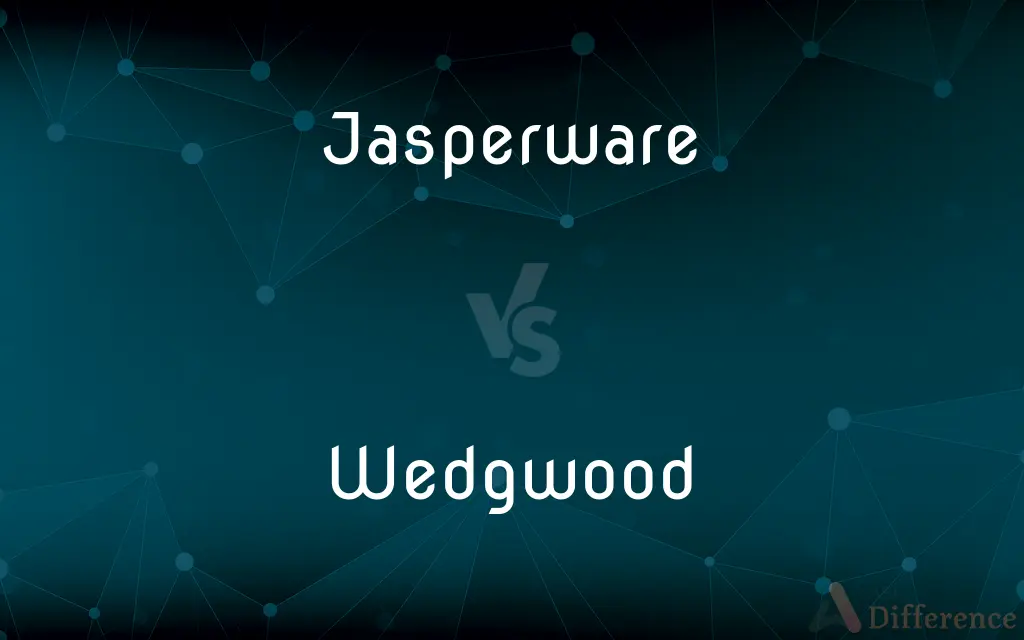Jasperware vs. Wedgwood — What's the Difference?

Difference Between Jasperware and Wedgwood
ADVERTISEMENT
Compare with Definitions
Jasperware
Jasperware, or jasper ware, is a type of pottery first developed by Josiah Wedgwood in the 1770s. Usually described as stoneware, it has an unglazed matte "biscuit" finish and is produced in a number of different colours, of which the most common and best known is a pale blue that has become known as Wedgwood Blue.
Wedgwood
Wedgwood is an English fine china, porcelain and luxury accessories manufacturer that was founded on 1 May 1759 by the potter and entrepreneur Josiah Wedgwood and was first incorporated in 1895 as Josiah Wedgwood and Sons Ltd. It was rapidly successful and was soon one of the largest manufacturers of Staffordshire pottery, "a firm that has done more to spread the knowledge and enhance the reputation of British ceramic art than any other manufacturer", exporting across Europe as far as Russia, and to the Americas.
Jasperware
A fine white stoneware originally produced by Josiah Wedgwood, often colored by metallic oxides with raised designs remaining white.
Wedgwood
English potter (1730-1795)
Jasperware
(ceramics) A form of pottery that has a stoneware body which is either white or colored, which is noted for its matte finish. It is a popular blue-and-white ware, but it comes in many other colors.
ADVERTISEMENT
Wedgwood
A type of pottery made by Josiah Wedgwood and his successors; typically has a classical decoration in white on a blue background
Share Your Discovery

Previous Comparison
Notepad vs. Laptop
Next Comparison
Curator vs. Zookeeper














































